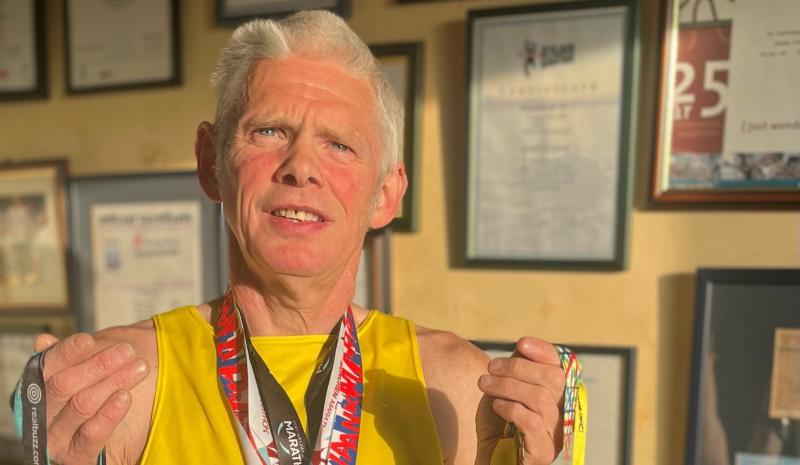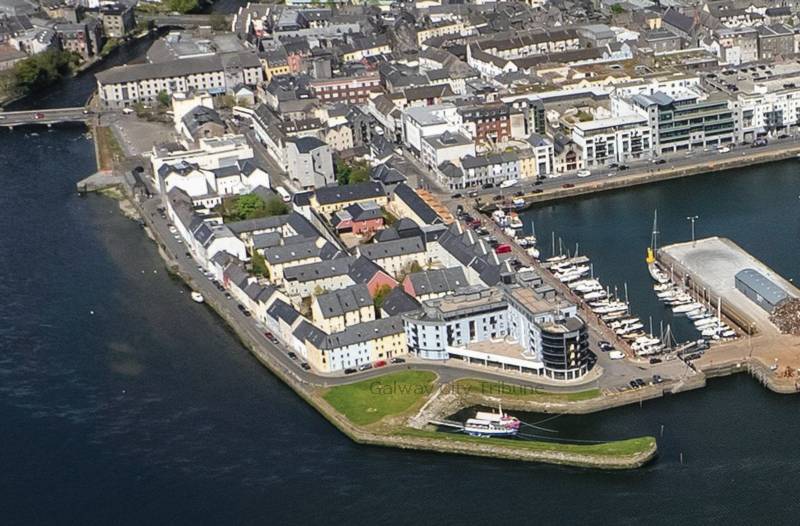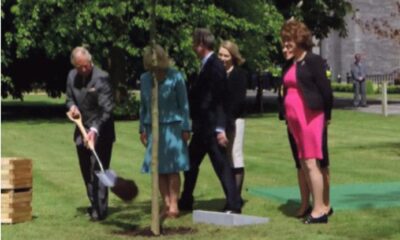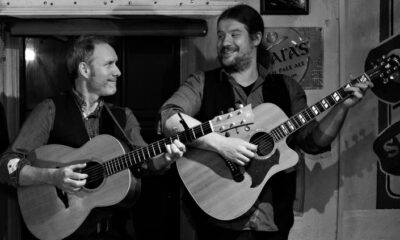News
Mental health services failed woman, city Inquest is told

A young woman (35) who had made a cry for help by taking an overdose of drugs more than a year ago, finally succeeded in her efforts last February when mental health services in the city failed her, it was claimed at an Inquest into her death.
The Inquest was adjourned to allow the Coroner for West Galway, Dr Ciaran MacLoughlin, to substantiate claims made by the woman’s friends at the hearing in Galway Courthouse.
They wanted to know who prescribed all the medication that she used to take her own life, why was she not admitted to the mental health unit when she sought help last winter, and why she was not monitored after her first suicide attempt in September 2015.
The Inquest heard that she had been made homeless when the house she was living in was put up for sale about a year before her death.
She had stayed with friends, before getting a bed in the women’s refuge at Osterley Lodge in Salthill. During that stay she had made an attempt on her life, though, and had to be rushed to hospital by ambulance.
“After that things went bad, and in November/December 2015 she tried to check herself into hospital,” a friend said.
“Her mental health wasn’t good enough to stay there (at the refuge), so she left and tried to go to the hospital . . . she tried to check herself into the psychiatric unit but they wouldn’t take her. It is a systemic problem, she needed to be an impatient somewhere but didn’t get that help.”
Her friends said that the first attempt on her life was a cry for help, but that she was not supported in the aftermath, which eventually led to a successful attempt a few months later.
Another friend told the inquiry that the woman was staying with her in Salthill on the night of February 2 last, but when she did not return for dinner, the alarm was raised.
“I phoned her at 7pm, but her phone was off, and no one had seen or heard from her,” she recalled.
“From her Facebook page, she had not been online since 5pm. She had taken an overdose previously, so I became concerned for her when she didn’t return. At 11pm, I reported her missing at Salthill Garda Station.”
Her friends were told that the last known location of her phone had been in the Renmore area, where their search commenced. However, it subsequently emerged that she had been seen the following day outside Ballybane Church by a woman who recognised her from the ‘missing person’ posters around the city.
When her phone rang as they were talking, she said it was a friend, but no one knows who she spoke to.
Co-ordinated searches were commenced, and a search and rescue dog eventually located the woman’s body in Merlin Woods on the afternoon of February 10. A handbag and a plastic bag of medication were beside her.
She was pronounced dead at 3.30pm, and her remains were taken to UHG for a post mortem examination. Consultant pathologist, Dr Caroline Brody, told the hearing that she had overdosed after consuming a range of prescription medications and alcohol.
Dr MacLoughlin returned a verdict in accordance with the medical evidence that the woman died on the day she was last seen, February 3, from pulmonary oedema as a result of aspiration from an overdose.
The woman’s friends raised a number of concerns, among them that the co-ordinated search for her had been very slow and frustrating. They accepted the Coroner’s explanation that Gardaí had to be sure that she was missing before embarking on a massive search, but said that they were certain something was wrong from the beginning.
“How did she have that amount of medication, I’d question who prescribed the cocktail when she had attempted suicide in September – you’re throwing pills on top of the problem,” said another friend.
“She wanted cognitive behavioural therapy, but it was only available once a month, she wanted more – it was not enough for someone attempting suicide.”
One of the owners of the rescue dogs involved in the search told the inquiry that, in her experience, when people of a certain age go missing it is assumed that they died by suicide. She said of all the other areas she was familiar with that Galway was the worst.
“A lot of people seemed to have searched for help but didn’t get it – who is turning these people away?” she asked.
The inquiry was adjourned to January 27 to allow the Coroner time to contact the woman’s consultant psychiatrist, GP, and attempt to find medical records to show when she tried to check herself in for help.
Connacht Tribune
West has lower cancer survival rates than rest

Significant state investment is required to address ‘shocking’ inequalities that leave cancer patients in the West at greater risk of succumbing to the disease.
A meeting of Regional Health Forum West heard that survival rates for breast, lung and colorectal cancers than the national average, and with the most deprived quintile of the population, the West’s residents faced poorer outcomes from a cancer diagnosis.
For breast cancer patients, the five-year survival rate was 80% in the West versus 85% nationally; for lung cancer patients it was 16.7% in the west against a 19.5% national survival rate; and in the West’s colorectal cancer patients, there was a 62.6% survival rate where the national average was 63.1%.
These startling statistics were provided in answer to a question from Ballinasloe-based Cllr Evelyn Parsons (Ind) who said it was yet another reminder that cancer treatment infrastructure in the West was in dire need of improvement.
“The situation is pretty stark. In the Western Regional Health Forum area, we have the highest incidence of deprivation and the highest health inequalities because of that – we have the highest incidences of cancer nationally because of that,” said Cllr Parsons, who is also a general practitioner.
In details provided by CEO of Saolta Health Care Group, which operates Galway’s hospitals, it was stated that a number of factors were impacting on patient outcomes.
Get the full story in this week’s Connacht Tribune, on sale in shops now, or you can download the digital edition from www.connachttribune.ie. You can also download our Connacht Tribune App from Apple’s App Store or get the Android Version from Google Play.
Connacht Tribune
Marathon Man plans to call a halt – but not before he hits 160 races

On the eve of completing his 150th marathon, an odyssey that has taken him across 53 countries, Loughrea’s Marathon Man has announced that he is planning to hang up his running shoes.
But not before Jarlath Fitzgerald completes another ten races, making it 160 marathons on the occasion of his 60th birthday.
“I want to draw the line in 2026. I turn 57 in October and when I reach 60 it’s the finishing line. The longer races are taking it out of me. I did 20 miles there two weeks ago and didn’t feel good. It’s getting harder,” he reveals.
“I’ve arthritis in both hips and there’s wear and tear in the knees.”
We speak as he is about to head out for a run before his shift in Supervalu Loughrea. Despite his physical complaints, he still clocks up 30 miles every second week and generally runs four days a week.
Jarlath receives injections to his left hip to keep the pain at bay while running on the road.
To give his joints a break, during the winter he runs cross country and often does a five-mile trek around Kylebrack Wood.
He is planning on running his 150th marathon in Cork on June 4, where a group of 20 made up of work colleagues, friends and running mates from Loughrea Athletics Club will join him.
Some are doing the 10k, others are doing the half marathon, but all will be there on the finishing line to cheer him on in the phenomenal achievement.
Get the full story in this week’s Connacht Tribune, on sale in shops now, or you can download the digital edition from www.connachttribune.ie. You can also download our Connacht Tribune App from Apple’s App Store or get the Android Version from Google Play.
CITY TRIBUNE
Galway ‘masterplan’ needed to tackle housing and transport crises

From the Galway City Tribune – An impassioned plea for a ‘masterplan’ that would guide Galway City into the future has been made in the Dáil. Galway West TD Catherine Connolly stated this week that there needed to be an all-inclusive approach with “vision and leadership” in order to build a sustainable city.
Deputy Connolly spoke at length at the crisis surrounding traffic and housing in Galway city and said that not all of the blame could be laid at the door of the local authority.
She said that her preference would be the provision of light rail as the main form of public transport, but that this would have to be driven by the government.
“I sat on the local council for 17 years and despaired at all of the solutions going down one road, metaphorically and literally. In 2005 we put Park & Ride into the development plan, but that has not been rolled out. A 2016 transport strategy was outdated at the time and still has not been updated.
“Due to the housing crisis in the city, a task force was set up in 2019. Not a single report or analysis has been published on the cause of the crisis,” added Deputy Connolly.
She then referred to a report from the Land Development Agency (LDA) that identified lands suitable for the provision of housing. But she said that two-thirds of these had significant problems and a large portion was in Merlin Park University Hospital which, she said, would never have housing built on it.
In response, Minister Simon Harris spoke of the continuing job investment in the city and also in higher education, which is his portfolio.
But turning his attention to traffic congestion, he accepted that there were “real issues” when it came to transport, mobility and accessibility around Galway.
“We share the view that we need a Park & Ride facility and I understand there are also Bus Connects plans.
“I also suggest that the City Council reflect on her comments. I am proud to be in a Government that is providing unparalleled levels of investment to local authorities and unparalleled opportunities for local authorities to draw down,” he said.
Then Minister Harris referred to the controversial Galway City Outer Ring Road which he said was “struck down by An Bord Pleanála”, despite a lot of energy having been put into that project.
However, Deputy Connolly picked up on this and pointed out that An Bord Pleanála did not say ‘No’ to the ring road.
“The High Court said ‘No’ to the ring road because An Bord Pleanála acknowledged it failed utterly to consider climate change and our climate change obligations.
“That tells us something about An Bord Pleanála and the management that submitted such a plan.”
In the end, Minister Harris agreed that there needed to be a masterplan for Galway City.
“I suggest it is for the local authority to come up with a vision and then work with the Government to try to fund and implement that.”















